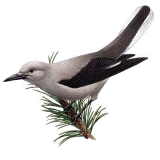Papers in the Biological Sciences
Document Type
Article
Date of this Version
1996
Abstract
The experiments reported here were designed to test the suggestion of many researchers that selective attention to visual features of a prey can account for search-image effects. In 3 experiments pigeons ate wheat and vetch grains presented on multicolored and gray gravel trays. In Experiment 1 search-image effects were evident when grains were cryptic but not when they were conspicuous. Experiment 2 demonstrated that search images can be activated when the grains encountered are either cryptic or conspicuous but that search images affect search performance only when the grains are cryptic. Experiment 3 demonstrated that search images are short-term in nature: A 3-min delay between successive encounters with a type of grain disrupted an activated search image. The discussion addresses how these results further develop a model in which search images are viewed as selective attention to visual features of a prey.



Comments
Published in Journal of Experimental Psychology: Animal Behavior Processes 22:2 (1996) , pp. 139-151; doi: 10.1037/0097-7403.22.2.139 Copyright © 1996 American Psychological Association. Used by permission. “This article may not exactly replicate the final version published in the APA journal. It is not the copy of record.” http://www.apa.org/journals/xan/